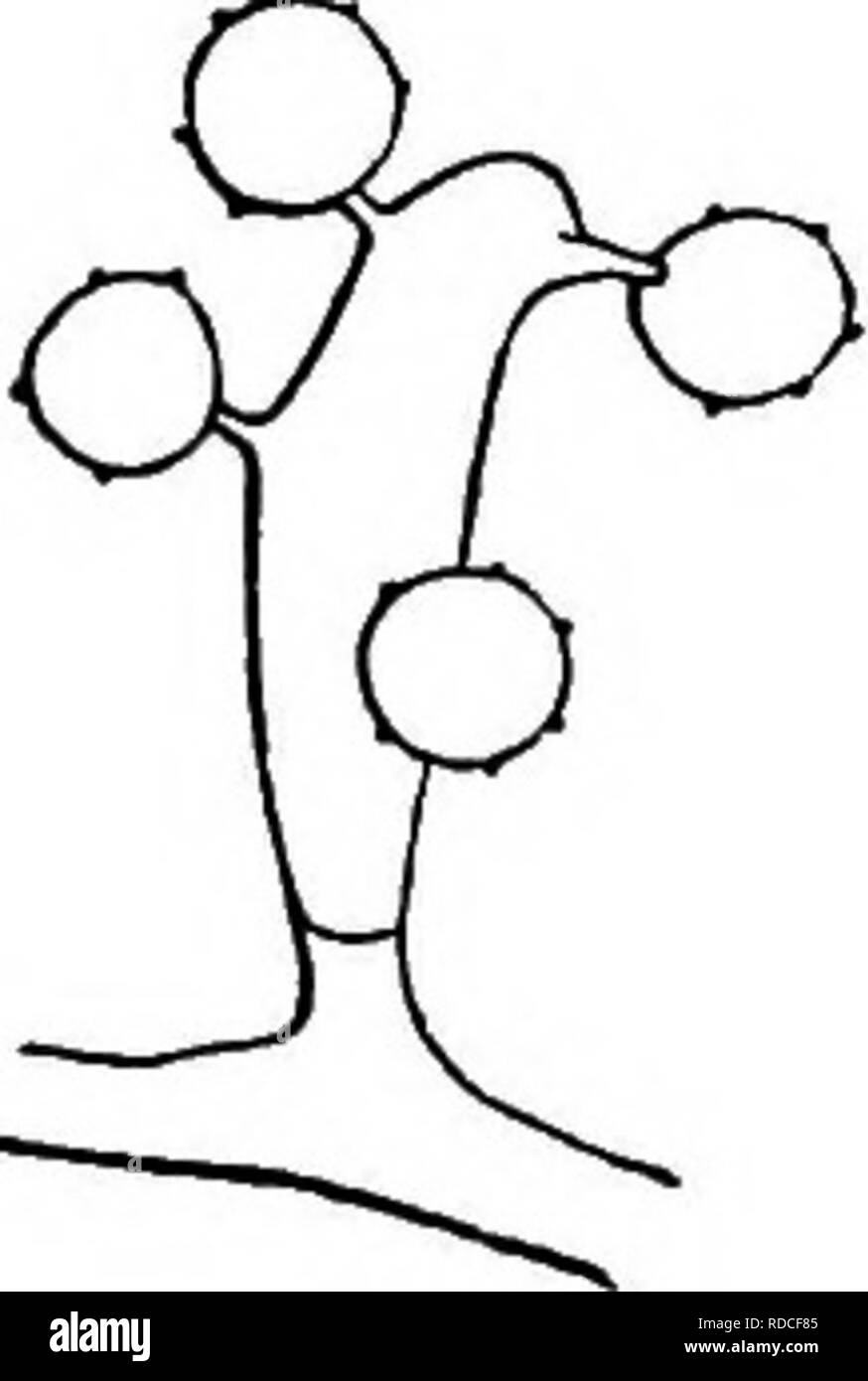. Comparative morphology and biology of the fungi, mycetozoa and bacteria . Plant morphology; Fungi; Myxomycetes; Bacteriology. 3IO DIVISION II.—COURSE OF DEVELOPMENT OF FUNGI. Corda; or it is composed of a tough gelatinous felt, as in Hysterangium and Melanogaster. The peridia show no marked peculiarities of structure, having a close weft like that of the walls of the chambers formed of hyphae which run chiefly in the direction of the surface. They decay after the spores have ripened and while the gleba is gradually becoming disintegrated. The Seeotieae, or at least the genus Seootiuin and Ca

Image details
Contributor:
The Book Worm / Alamy Stock PhotoImage ID:
RDCF85File size:
7.2 MB (113.8 KB Compressed download)Releases:
Model - no | Property - noDo I need a release?Dimensions:
1297 x 1927 px | 22 x 32.6 cm | 8.6 x 12.8 inches | 150dpiMore information:
This image is a public domain image, which means either that copyright has expired in the image or the copyright holder has waived their copyright. Alamy charges you a fee for access to the high resolution copy of the image.
This image could have imperfections as it’s either historical or reportage.
. Comparative morphology and biology of the fungi, mycetozoa and bacteria . Plant morphology; Fungi; Myxomycetes; Bacteriology. 3IO DIVISION II.—COURSE OF DEVELOPMENT OF FUNGI. Corda; or it is composed of a tough gelatinous felt, as in Hysterangium and Melanogaster. The peridia show no marked peculiarities of structure, having a close weft like that of the walls of the chambers formed of hyphae which run chiefly in the direction of the surface. They decay after the spores have ripened and while the gleba is gradually becoming disintegrated. The Seeotieae, or at least the genus Seootiuin and Cauloglossum trans- versarium, are Hymenogastreae in structure with a stipe and a thick central column which traverses the entire peridium up to the apex in the line of prolongation of the stipe (Fig. 144). 2. The young compound sporophores of the Lycoperdaceae, with whose development we have any acquaintance (Lyooperdon, Bovista, Geaster), display the structure of the HjTnenogastreae in all important points up to the time of the formation of spores, only the young peridium is developed on a much larger scale. One point of difference makes its appearance at an early period; two kinds of hyphae are formed in the trama when still young : slender delicate segmented hyphae rich in protoplasm, which make up the chief mass of the trama and by their branches form. Please note that these images are extracted from scanned page images that may have been digitally enhanced for readability - coloration and appearance of these illustrations may not perfectly resemble the original work.. Bary, A. de (Anton), 1831-1888; Garnsey, Henry E. F. (Henry Edward Fowler), 1826-1903; Balfour, Isaac Bayley, 1853-1922. Oxford : Clarendon Press